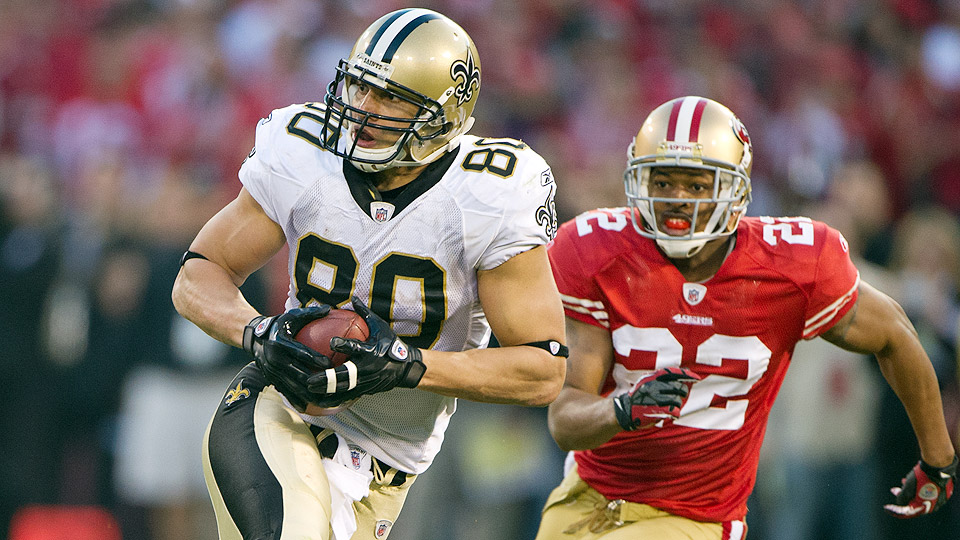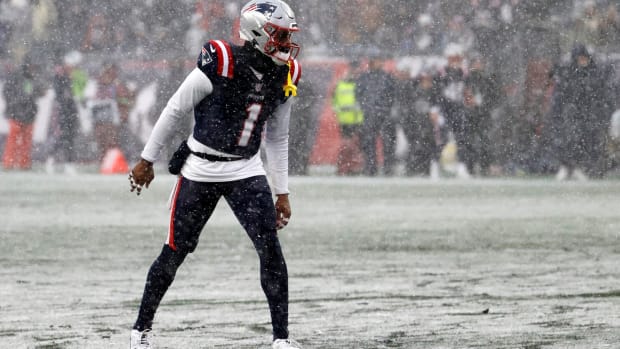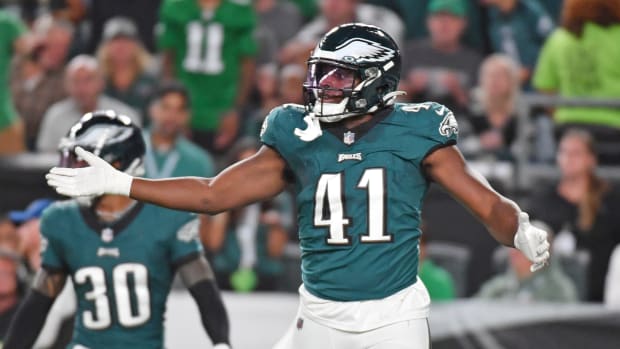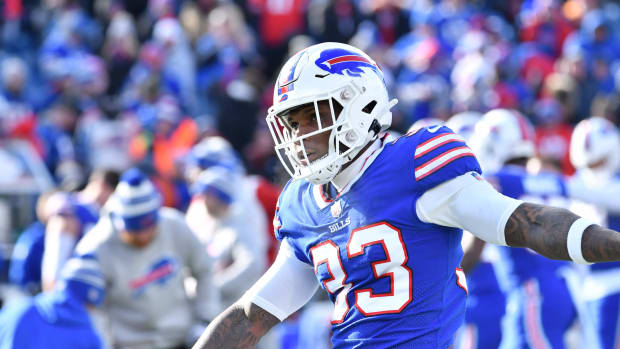Jimmy Graham ruled a tight end, but the positional debate is far from over
The ruling that New Orleans Saints tight end Jimmy Graham is, in fact, a tight end for franchise tag purposes is a $5 million blow to Graham, and a crowbar in what could have been a game-changing paradigm for tight ends as we know them today. Arbiter Stephen Burbank, who presided over the June 17-18 hearing in which Graham presented his case that he should be paid as a receiver under the team's franchise designation, ruled on Wednesday that Graham's value to the team is positionally limited -- if not statistically, than certainly financially. Graham will earn $7.035 million as a franchised tight end as opposed to the $12.312 million he could have made had he been ruled a wide receiver. Reports indicate that the Saints and Graham's representatives would love to come to terms on a multi-year deal to avoid any other drama before the league's July 15 deadline for Graham to sign his tender, but this ruling certainly puts the team in the catbird seat.
After listening to testimony from Graham, Saints head coach Sean Payton and general manager Mickey Loomis, as well as former NFL GM and current ESPN analyst Bill Polian, Burbank ruled that any shades of gray in Graham's positional value were negligible.
"Central to the NFLPA's contention that Mr. Graham was not participating in plays as a tight end when he was aligned more than two yards from the nearest lineman, as also to Mr. Graham's testimony, is the argument that any greater distance eliminates the potential of the player to serve one or more of the three roles that a tight end may perform on a given play: run-blocking, pass-protecting, and route-running," Burbank wrote. "There is nothing in any definition of a "tight end" I have seen that confines his blocking universe to defensive linemen. In any event, viewing video of a play, Mr. Graham acknowledged that he blocked a defensive end from a split of between two and four yards."
Burbank also cited Graham's own classification of himself as a tight end on his social media accounts, and the Saints' consistent listing of him as a tight end.
"The NFLPA will review with Jimmy Graham the decision from Arbitrator Stephen Burbank which permits the player to be designated as a tight end for Franchise Tag purposes," the NFL Players Association said in a statement. "We will advise Graham of his options and carefully determine next steps in this matter. We will also continue to assist Graham and his representation as necessary to help the player reach a fair long-term deal with the New Orleans Saints."
Selected in the third round of the 2010 NFL draft out of Miami, Graham has been one of the more prolific players at his position over the last four seasons, catching 301 passes for 3,863 yards and 41 touchdowns. In 2013, he led the league with 16 receiving touchdowns, and caught 86 passes for 1,216 yards.
MORE COVERAGE: Post-draft NFL Power Rankings | 2015 NFL Mock Draft
He lined up out wide or in the slot on 67 percent of his snaps last season, and that was the crux of Graham's argument -- that he is not a tight end in the traditional sense. He is not often tasked to stay inline and block -- he's rarely even Drew Brees' hot route on short passes. He's become one of the better seam receivers of any stripe in the NFL, and ranked second among tight ends behind San Francisco's Vernon Davis with 18 targets in which he was 20 or more yards downfield. Graham caught eight of those targets for 321 yards and five touchdowns. Houston's Andre Johnson had eight such receptions last season, for 293 yards and two touchdowns. Philadelphia's DeSean Jackson led all targets at any position with 16 deep catches for 553 yards and eight touchdowns, and the fact that Graham is in that discussion at all makes his point to a large degree.
Graham is not the first tight end to contest his positional restraint, nor will he be the last. It's not just that Graham's side is sure to appeal Burbank's ruling; Davis also wants a long-term deal and will be sure to use the same value versus position debate. And as TheMMQB.com's Greg Bedard reported in 2012 when he was with the Boston Globe, the salary scuffle between the Packers and tight end Jermichael Finley brought these issues to bear. Finley wanted to be paid as a receiver, and the Packers obviously disagreed. They split the difference with a two-year, $15 million contract, and Finley unfortunately suffered a severe neck injury in October 2013. He is still trying to get back in the league, but as his agent, Blake Baratz said in 2012, the larger issue was (and is) how the new tight end position will be valued. According to Football Outsiders' metrics, Finley led all tight ends in 2011 with 152 snaps out wide -- almost twice what Graham (78) had that season.
As a result, Baratz was ready to go to the mattresses and risk a hearing like the one Graham just lost before the Packers quieted that drama with the new deal.
“We looked very heavily into it,” Baratz told Bedard. “I could see an arbitrator looking at it a lot of different ways. The team is going to argue it doesn’t matter where the guy lines up and what he does, he’s a tight end. Our argument was, when you make an argument on where they are lining up, what kind of stance they’re in, whether they’re running routes and the percentages that Jermichael was doing that. To me, that’s no different than if Wes Welker is in the slot or [Packers receiver] James Jones is in the slot.
“The team’s going to say he was a tight end in college, he sits in the tight end meeting room, and he’s a tight end in the media guide, and on websites he’s a tight end. That’s all great, but our argument was what’s the definition of a tight end? To us, [that] says he plays tight to the end, which is the traditional definition.”
In an era when specialization is more important than ever in the NFL, the league gained a minor reprieve with Burbank's decision in the Graham case. This issue is not over, nor will it be for other hybrid positions -- defensive ends who line up frequently at tackle, running backs who are often split wide, and safeties who play slot cornerback a certain percentage of the time.
In the larger, more overarching sense, the NFL and NFLPA have work to do so that players with unique and multiple value are justly compensated for the value they bring to their teams.





































